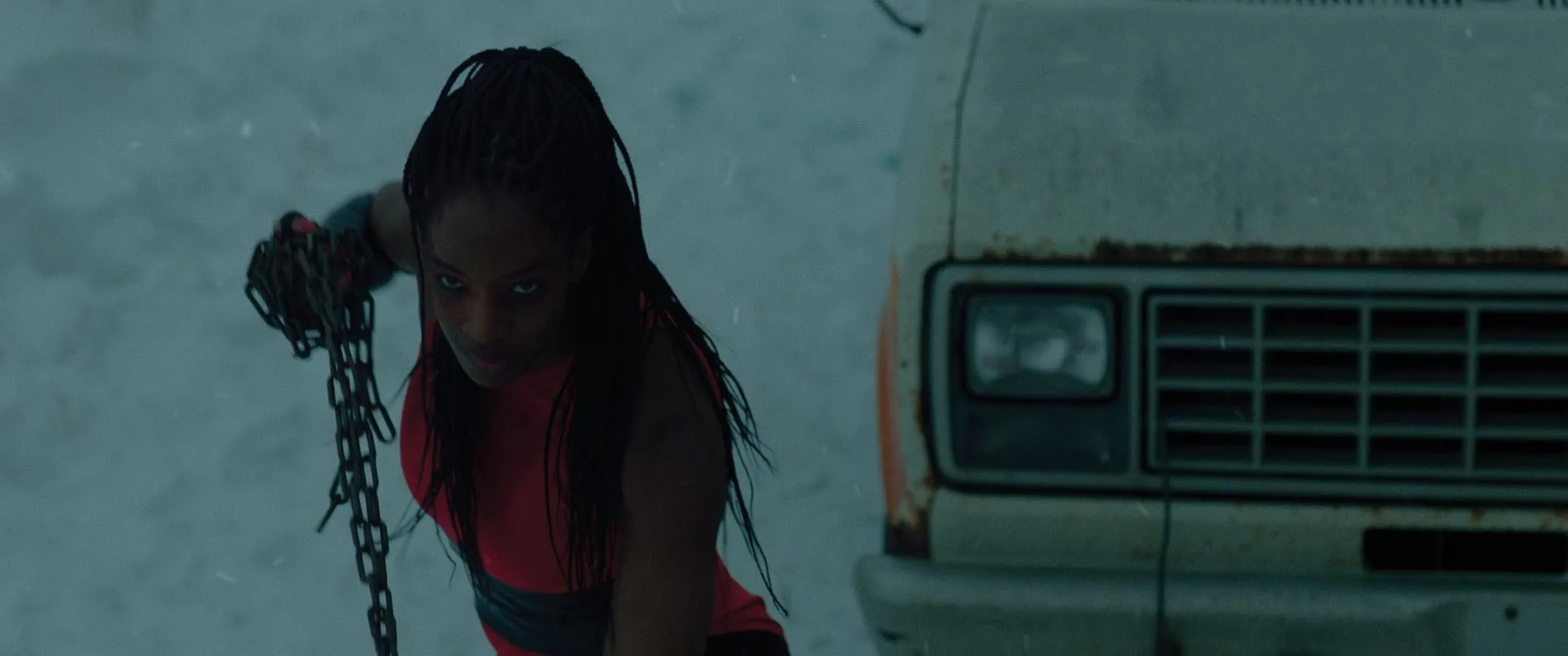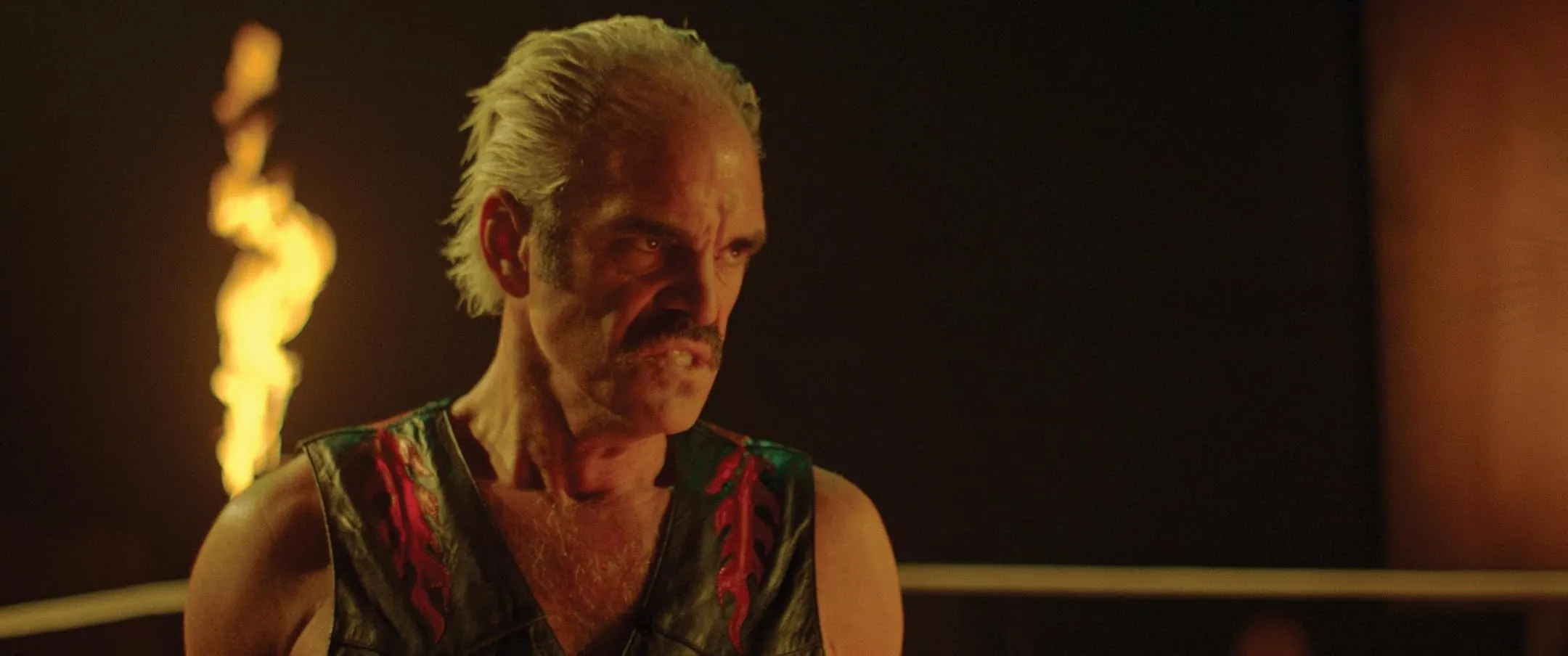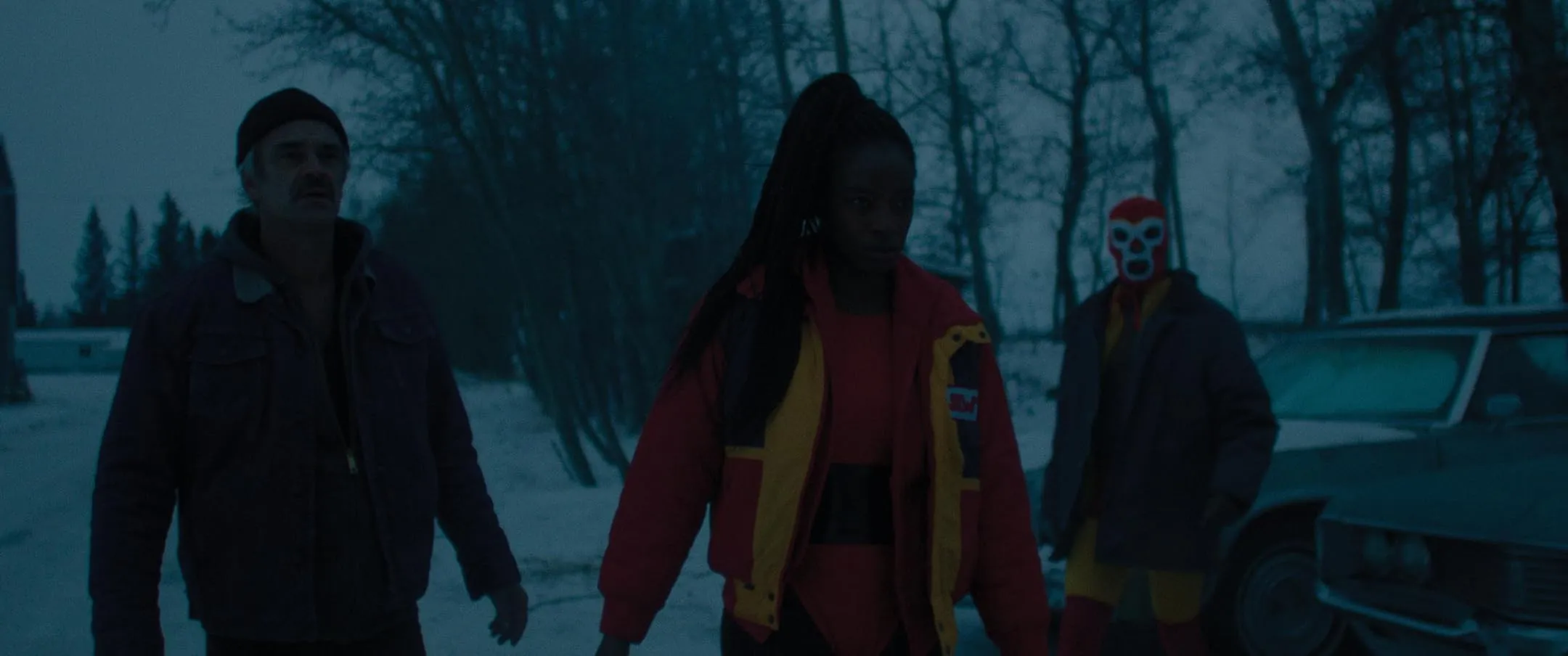“Dark Match” emerges as a provocative film blending professional wrestling with horror elements. The movie, available on Shudder, explores an underground tournament where amateur wrestlers become unwitting participants in a sinister ritual orchestrated by a cult.
The film disrupts conventional storytelling through grindhouse-inspired techniques. Its narrative repositions wrestlers typically seen as antagonists, challenging viewer expectations and genre boundaries. This approach creates a nuanced exploration of performance and conflict.
Cinematically, the movie captures a raw aesthetic reminiscent of vintage VHS recordings. Gritty visual textures and intense lighting amplify the physical confrontations, while sonic elements heighten the visceral experience of each wrestling encounter.
By intertwining wrestling’s performative violence with supernatural horror, “Dark Match” probes deeper questions about spectacle, survival, and audience engagement. The film transforms a seemingly straightforward genre exercise into a complex meditation on entertainment’s darker impulses.
Wrestling with Horror: The Premise and Plot of “Dark Match”
“Dark Match” presents a gripping narrative that blends horror with professional wrestling. Set in the 1980s, the film follows a group of amateur wrestlers lured to a remote location by a mysterious opportunity. Wrestling icon Chris Jericho portrays a charismatic cult leader, creating an atmosphere of mounting dread.
The wrestlers arrive expecting a quick payday, unaware of the sinister intentions awaiting them. What begins as a potential performance quickly transforms into a terrifying struggle for survival. The compound becomes a treacherous arena where matches are no longer about entertainment but ritualistic elimination.
As the story progresses, the characters confront escalating challenges that test their physical and psychological limits. The narrative explores the thin line between staged performance and genuine threat, revealing how quickly controlled scenarios can spiral into uncontrollable chaos.
The film delves into complex themes of manipulation, survival, and the dark undercurrents of entertainment culture. By merging wrestling’s dramatic spectacle with horror’s visceral tension, “Dark Match” creates a unique exploration of human vulnerability and unexpected danger.
Grappling with Identity: Character Development in “Dark Match”
In “Dark Match,” the characters drive the film’s narrative tension, pulling the audience into a world where the wrestling ring becomes a metaphorical battleground. Ayisha Issa’s portrayal of Miss Behave emerges as a wrestler wrestling with personal and professional challenges, embodying the struggle of female performers in a male-dominated sport.
Miss Behave’s character reveals deep conflicts. Her relationship with Mean Joe Lean, played by Steven Ogg, exposes the intricate dynamics between personal connection and professional rivalry. As partners both in and out of the ring, they wrestle with individual aspirations and shared challenges.
Chris Jericho’s character as a cult leader creates a stark counterpoint to Miss Behave. His portrayal shifts between magnetic and threatening, exploring themes of manipulation and authority. The character serves as a mirror to Miss Behave’s internal conflicts, highlighting the psychological tensions within the wrestling world.
Supporting characters add depth to the narrative. From committed wrestlers to cult followers, each character contributes to a complex exploration of performance, identity, and survival. The masked luchador Enigma Jones particularly stands out, representing unspoken struggles within this intense environment.
“Dark Match” explores wrestling as a lens for examining broader human experiences of struggle, identity, and personal transformation.
A Visual Odyssey: The Cinematic Style of “Dark Match”
“Dark Match” offers a visual journey that references the bold aesthetics of the 1980s while capturing the raw energy of independent cinema. The film immediately transports viewers into a world reminiscent of worn VHS tapes, creating a nostalgic experience that resonates with wrestling fans and cinema lovers alike.
The film’s color palette explores intense contrasts, using harsh reds and greens that transform visual storytelling. These color choices reflect the characters’ internal struggles, painting emotional landscapes that complement the narrative’s depth. Like a complex musical composition, the visual design weaves together contrasting elements of wrestling’s vibrant world and darker psychological undercurrents.
Cinematographically, the film uses dynamic techniques to heighten action sequences. Handheld camera work brings an unfiltered intensity to wrestling matches, capturing each movement with visceral precision. Quick cuts and tight shots create a rhythmic chaos that pulses with energy, drawing viewers into the film’s unpredictable world.
Shooting compositions strategically frame characters, establishing a sense of tension and confinement. The visual approach transforms viewers from passive observers to engaged participants, blurring the boundaries between performance and reality.
“Dark Match” crafts a cinematic experience that defies expectations, inviting audiences into a vivid, unpredictable realm where visual storytelling becomes a language of its own.
Wrestling with Ideals: Themes and Tone in “Dark Match”
“Dark Match” explores compelling themes that go beyond its wrestling and horror premise. The narrative centers on sacrifice—wrestlers confront deep implications about their identities and dreams. This creates tension similar to contemporary cinema, where characters examine the weight of their aspirations.
The film explores cult dynamics through Chris Jericho’s character, revealing how influential leaders manipulate vulnerable people. By situating wrestlers within this context, the story challenges perceptions of masculinity and heroism, questioning what defines genuine strength.
Miss Behave, the protagonist, represents experiences of marginalized individuals in a male-dominated sport. Her struggles against professional and societal barriers highlight systemic challenges faced by women of color, adding nuanced perspectives to the storytelling.
The film skillfully merges horror and comedy, crafting intense moments balanced with unexpected humor. Visceral scenes blend with comedic elements, creating a dynamic viewing experience that keeps audiences engaged. This approach draws from cinematic traditions that use humor as a narrative counterpoint.
“Dark Match” crafts a multilayered exploration of personal struggles, societal expectations, and individual resilience through its wrestling narrative.
Throwing Down the Gauntlet: Action and Wrestling Sequences in “Dark Match”
“Dark Match” explores its wrestling premise through creatively themed matches, each layered with symbolism and tension. The film presents inventive wrestling scenarios, including a “wind match” and a “water match” that transcend typical spectacles.
The “wind match” employs an industrial fan within the ring, creating chaotic conditions where wrestlers battle both opponents and environmental forces. This approach highlights characters’ struggles against external challenges and internal conflicts. The “water match” introduces sprinklers above the canvas, transforming the wrestling environment into a perilous landscape that reflects characters’ emotional states.
These thematic matches drive the storyline and character development. They evolve from performance art into intense confrontations, revealing the characters’ mounting desperation. The choreography escalates to a raw, uncompromising level that explores themes of physical and emotional sacrifice.
The film’s violent sequences critically examine entertainment’s relationship with bloodshed. Graphic moments prompt viewers to consider societal desensitization to violence. Wrestling scenes capture the energy of exploitation cinema, drawing parallels with works that blur lines between art and spectacle.
“Dark Match” engages with independent cinema’s experimental approach, challenging traditional storytelling while critiquing cultural fascination with sensational content. Its moments of absurdity invite viewers to examine the narratives they consume, creating an uncomfortable yet compelling viewing experience.
The Art of Mayhem: Overall Execution and Viewer Experience in “Dark Match”
In “Dark Match,” director Lowell Dean explores the intersection of horror and wrestling, creating a film that grips viewers with its intensity. The pacing weaves between tension and genre exploration. The film quickly immerses audiences in the world of amateur wrestling, where each mat encounter feels raw and electrifying. As the narrative progresses, the tone transforms, pulling characters and viewers into an escalating sense of danger.
Dean’s approach finds strength in balancing absurdity with genuine terror. The transition from comedic moments to visceral horror occurs with skilled precision, allowing audiences to experience a spectrum of emotions. This technique echoes the style of filmmakers who skillfully blend humor and fear, creating an experience that simultaneously entertains and unsettles.
Some narrative elements could benefit from tighter editing. Certain plot points occasionally slow the film’s momentum during intense sequences. Yet, the overall experience remains captivating, drawing viewers into a strange world of cults and wrestling with the excitement of a live performance.
The film excels when it embraces its bizarre nature, offering a provocative look at entertainment culture. “Dark Match” explores the complex relationship between spectacle, fame, and personal sacrifice, creating a cinematic experience that challenges and entertains.
The Review
Dark Match
"Dark Match" blends horror and wrestling into an engaging narrative that explores societal themes through visceral storytelling. The film features compelling performances, with Ayisha Issa standing out as a particularly dynamic lead. Its visual approach draws inspiration from 80s genre cinema, creating a raw and intense viewing experience. The movie weaves together wrestling's spectacle with psychological depth, examining complex ideas about personal struggle and public persona. While the storytelling occasionally lacks precision, the film offers a gripping exploration of performance, identity, and human resilience.
PROS
- Successfully combines horror and professional wrestling in an innovative way.
- Particularly notable is Ayisha Issa's portrayal of Miss Behave, which brings depth to her character.
- The thematic wrestling matches add an engaging layer to the story and elevate the stakes.
CONS
- Some narrative elements linger too long, disrupting the overall rhythm.
- Certain supporting characters lack depth, making them feel like mere plot devices.
- While Chris Jericho’s character has potential, he's less menacing than expected.





















































